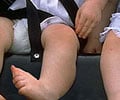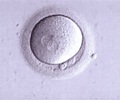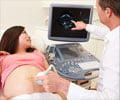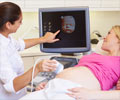Plantar fasciitis, a painful foot condition, can be treated using a unique combination of ultrasound-guided technique and steroid injection. A study un the method claims it is 95 percent effective at relieving the aching foot.
Plantar fasciitis, the most common cause of heel pain, is an inflammation of the connective tissue called the plantar fascia that runs along the bottom of the foot, from the heel to the ball of the foot.Conventional treatments take up to a year to be effective, including rest, exercises to stretch the fascia, night splints and arch supports.
When the condition does not respond to conservative treatments, patients may opt for shockwave therapy, in which sound waves are directed at the area of heel pain to stimulate healing.
Shockwave therapy is painful, requires multiple treatments and is not always effective.
In the new study, Luca M. Sconfienza, M.D., from Italy's University of Genoa and colleagues used a new ultrasound-guided technique, along with steroid injection, on 44 patients with plantar fasciitis that was unresponsive to conservative treatments.
"There is no widely accepted therapy or standard of care for patients when first-line treatments fail to relieve the pain of plantar fasciitis," said the study's lead author, Sconfienza.
Advertisement
After injection of a small amount of anesthesia, the anesthetic needle is used to repeatedly puncture the site where the patient feels the pain.
Advertisement
Lastly, a steroid is injected around the fascia to eliminate the inflammation and pain.
The technique is performed with ultrasound guidance to improve accuracy and to avoid injecting the steroids directly into the plantar fascia, which could result in rupture.
After the 15-minute procedure, symptoms disappeared for 42 of the study's 44 patients (95 percent) within three weeks.
"This therapy is quicker, easier, less painful and less expensive than shockwave therapy," Sconfienza said.
"In cases of mild plantar fasciitis, patients should first try noninvasive solutions before any other treatments. But when pain becomes annoying and affects the activities of daily living, dry-needling with steroid injection is a viable option," she added.
The study was presented at the annual meeting of the Radiological Society of North America (RSNA).
Source-ANI
TAN/L














